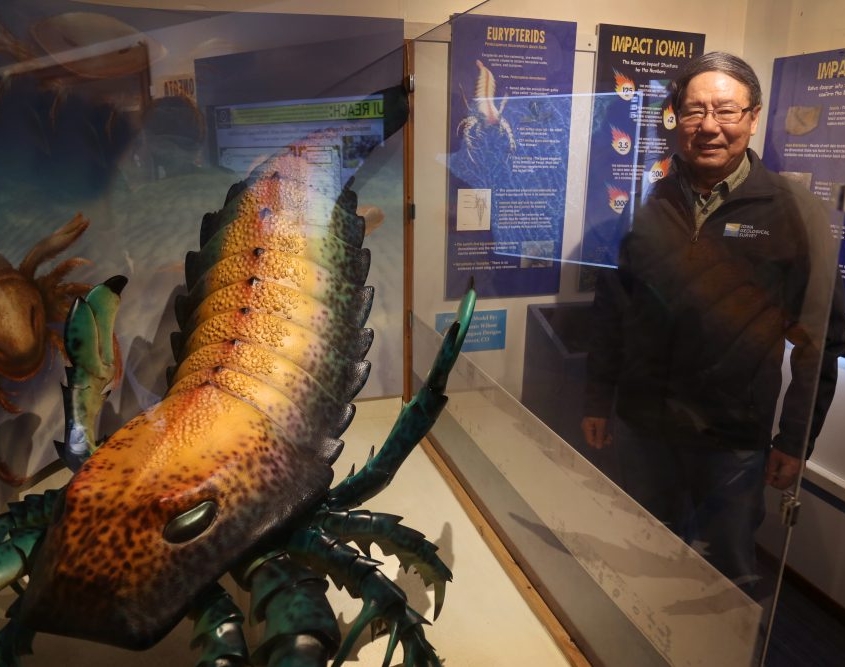Delving Deep: Fossils from Iowa’s Ancient Sea
Originally Posted on: April 25th, 2017
IGS Researchers Uncover Extraordinary Fossil Deposit near Decorah

IGS researcher Paul Liu poses with a representation of the ancient sea scorpion fossil Liu and his colleagues discovered in northeast Iowa.
This year, visitors to the University of Iowa’s Mobile Museum will get a glimpse of Iowa history that might look like something from a horror movie — a six-foot giant sea scorpion that called Iowa home hundreds of millions of years ago.
Iowa Geological Survey research specialist Paul Liu and his team discovered that 465 million years ago, a meteorite had struck the Earth in the area that is now Decorah, Iowa. In the resulting crater, the researchers found an astonishing collection of exceptionally well-preserved fossils. The site represents one of only a few such “Lagerstätten” (the scientific term for a fossil deposit of this magnitude) from the Middle Ordovician period.
Liu explains that at that time, shallow saltwater covered much of what is now the Midwest. The area around Decorah was near the coast, where the water was less salty. Thus, distinctive organisms evolved to exist in the special conditions there. When the meteorite struck the Earth, the water near the crater’s seafloor became very still, brackish, and low in oxygen. Organisms in the water died and fell to the seabed, where they were preserved and laid undisturbed until Liu and his colleagues found them.
“This opens a new window to tell us what Ordovician life was like,” Liu says.
One of the most dramatic finds was the sea scorpion, the earliest and largest such animal of that period, with a long head shield, a narrow curving body, and huge scary claw-like limbs that could easily trap the creature’s unfortunate prey. The sea scorpion’s modern relatives include spiders, lobsters, and ticks. Imagine a six-foot tick!

Paul Liu admires a model of Scorpy that will be touring the state this summer in the UI Mobile Museum.
Working with colleagues at Yale University, Liu has been able to form a picture of how this predator looked and what its life was like in the shallow and likely brackish waters that covered Northeast Iowa millions of years ago.
The UI Mobile Museum will soon be crisscrossing the state of Iowa, stopping at schools, libraries, fairs, and more. Be sure to check it out when the Mobile Museum is in your town!




